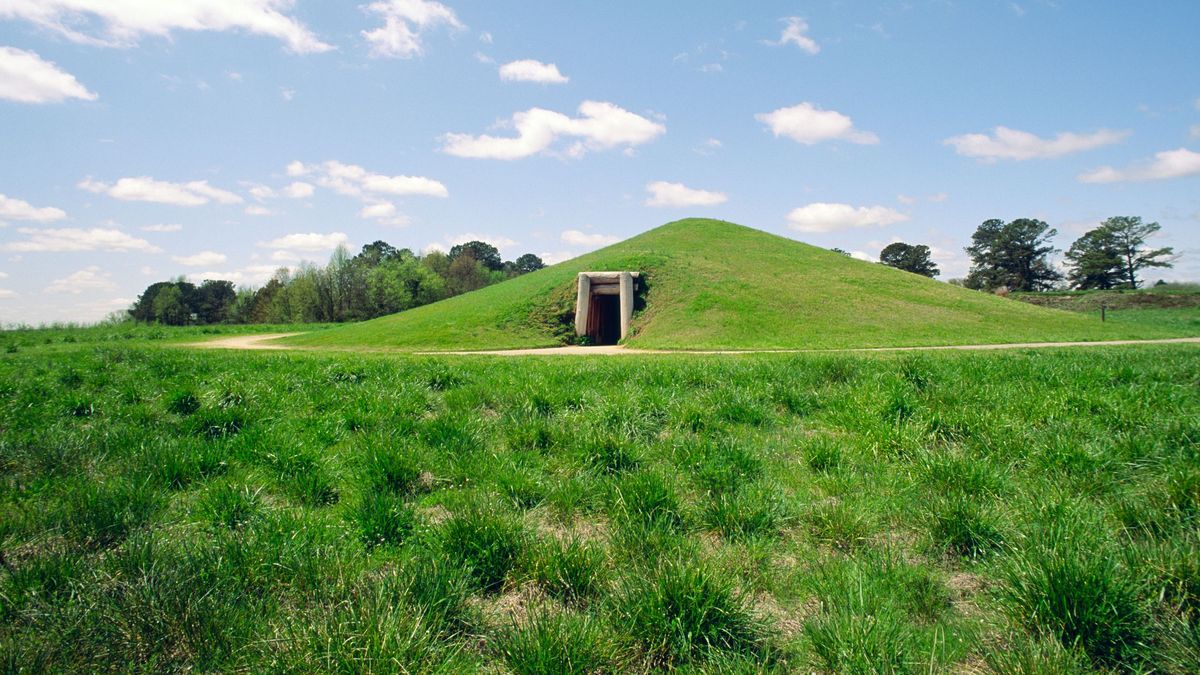Secrets Of Georgia’s Prehistoric Mound Builders

Have you ever wondered about the ancient history hidden in Georgia? The prehistoric mound builders of Georgia left behind fascinating structures that tell stories of a time long before modern civilization. These mounds, built by Native American cultures, served various purposes, from ceremonial sites to burial grounds. Visiting these historical sites offers a glimpse into the lives and beliefs of the people who constructed them. Imagine walking through places where rituals and daily activities took place thousands of years ago. Whether you're a history buff or just curious, exploring these mounds can be an eye-opening experience. Ready to uncover the secrets of Georgia's past? Let's dive in!
Secrets of Georgia's Prehistoric Mound Builders
Georgia's landscape holds secrets from ancient times. The prehistoric mound builders left behind fascinating structures that tell stories of their lives. Let's uncover some of these mysterious sites.
Etowah Indian Mounds
The Etowah Indian Mounds are among the most significant archaeological sites in Georgia. These mounds were built by the Mississippian culture, which thrived from 1000 to 1550 AD.
- Great Temple Mound: Standing at 63 feet, this mound was likely used for religious ceremonies and as a platform for the chief's residence.
- Funeral Mound: This smaller mound served as a burial site, containing artifacts like copper plates and shell beads.
- Village Site: Surrounding the mounds, the village area provides insight into the daily lives of the Mississippian people.
Ocmulgee Mounds
Located in Macon, the Ocmulgee Mounds offer a glimpse into the lives of the prehistoric people who lived there over 17,000 years ago.
- Great Temple Mound: This mound, used for ceremonial purposes, offers a panoramic view of the surrounding area.
- Earth Lodge: A reconstructed earth lodge with a ceremonial floor dating back to 1015 AD.
- Funeral Mound: This mound contains burials and artifacts that provide clues about the social structure of the community.
Kolomoki Mounds
The Kolomoki Mounds in southwest Georgia are some of the oldest and largest in the state, built by the Woodland culture between 350 and 750 AD.
- Temple Mound: This massive mound, standing at 57 feet, was likely used for religious ceremonies.
- Mound A: The largest mound at Kolomoki, it served as a platform for important structures.
- Mound D: A burial mound containing artifacts like pottery and tools, offering insights into the daily lives of the mound builders.
Rock Eagle Effigy Mound
The Rock Eagle Effigy Mound is a unique site in Georgia, featuring a large bird-shaped mound made of white quartz rocks.
- Effigy Mound: This mound, shaped like an eagle, is believed to have been constructed by Native Americans between 1000 and 3000 years ago.
- Observation Tower: A tower that provides a bird's-eye view of the effigy, allowing visitors to appreciate its full scale and design.
Fort Mountain
Fort Mountain in north Georgia is home to a mysterious stone wall that has puzzled archaeologists for years.
- Stone Wall: This 885-foot-long wall, built from loose rocks, is thought to have been constructed by prehistoric people for unknown purposes.
- Tower Site: Remnants of a stone tower that may have been part of the wall's original structure.
- Overlook: A scenic viewpoint offering stunning views of the surrounding landscape and the stone wall below.
Nacoochee Mound
The Nacoochee Mound, located in the Sautee-Nacoochee Valley, is a significant archaeological site with a rich history.
- Burial Mound: This mound contains burials and artifacts that provide insights into the lives of the prehistoric people who built it.
- Village Site: Surrounding the mound, the village area offers a glimpse into the daily lives of the mound builders.
- Historic Marker: A marker that provides information about the history and significance of the Nacoochee Mound.
Conclusion
Georgia's prehistoric mound builders left behind a legacy that continues to fascinate and intrigue. These ancient sites offer a window into the past, revealing the rich history and culture of the people who once called this land home.
Discovering Georgia's Ancient Legacy
Georgia's prehistoric mound builders left behind a fascinating legacy. These ancient structures, like the Etowah Indian Mounds and Ocmulgee Mounds, offer a glimpse into the lives of the people who built them. Exploring these sites reveals their advanced engineering skills, social organization, and cultural practices.
Visiting these mounds provides a unique opportunity to connect with history. Walking among these ancient earthworks, you can almost feel the presence of those who once thrived there. It's a reminder of the rich heritage that lies beneath our feet.
Whether you're a history buff or just curious, Georgia's mounds are worth a visit. They tell a story of human ingenuity and resilience that continues to inspire. So next time you're in Georgia, take a detour to these incredible sites. You'll leave with a deeper appreciation for the ancient world and its enduring mysteries.

